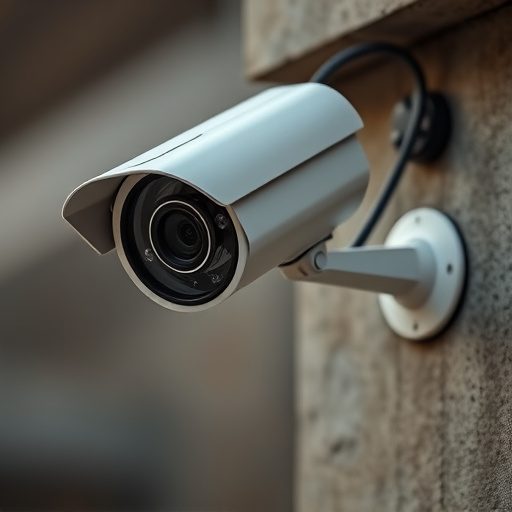Strategically placed indoor fake CCTV cameras deter intruders by simulating constant surveillance without complex wiring. Their authenticity and placement make them effective against theft, vandalism, and illegal acts as part of a comprehensive security strategy. Installation in plain sight, regular maintenance, and adherence to regional regulations balance security with privacy concerns while maximizing deterrent effectiveness. Research shows visible and hidden mock cameras significantly reduce criminal activity.
“Uncover the power and limitations of indoor fake surveillance systems, known as Fake CCTV cameras, in this comprehensive review. Explore how these simulated devices impact crime deterrence with a focus on visual realism. Delve into installation ease, maintenance needs, legal considerations, and ethical debates surrounding their use. Discover the truth about their effectiveness compared to real cameras through real-world studies. Unravel the potential of Fake CCTV as a deterrent, understanding both its promise and current limitations.”
- Evaluating Fake CCTV's Visual Impact
- Deterring Crime: Truth vs. Illusion
- Installation and Maintenance Considerations
- Legal and Ethical Aspects of Simulated Surveillance
- Real-World Effectiveness Studies Compared
Evaluating Fake CCTV's Visual Impact
The visual impact and deterrent effect of indoor fake surveillance systems are crucial considerations for anyone looking to enhance security measures in their homes or businesses. While real CCTV cameras have long been a staple in security, fake ones offer an intriguing alternative. These simulated cameras mimic the appearance of genuine CCTV equipment, but without the need for intricate wiring or costly installation processes. Their primary purpose is not to record high-quality footage but rather to deter potential intruders by creating the perception of constant surveillance.
Evaluating the deterrent effect involves considering factors such as placement and realism. Strategically positioning fake cameras in plain sight can significantly alter an individual’s behavior, making them less likely to engage in unlawful activities. The level of detail in these fake CCTV cameras, from lens design to housing material, plays a role in enhancing their overall authenticity and psychological impact on would-be criminals. In many cases, the mere presence of these realistic replicas can be enough to prevent theft, vandalism, or other illegal acts, making them an affordable and effective security solution for various environments.
Deterring Crime: Truth vs. Illusion
While fake surveillance systems, like cleverly designed fake CCTV cameras, might seem like a novel deterrent, their actual effectiveness in preventing crime is a topic of debate. In reality, their impact often depends on more than just the visual cue; it’s about creating an environment that sends a strong message.
The “illusion” of constant surveillance can deter potential criminals as much as the real thing. Well-placed fake cameras can make intruders feel they’re always being watched, leading to a psychological effect that discourages unlawful behavior. However, it’s crucial to remember that these systems are not infallible and shouldn’t be relied upon as the sole security measure. Their deterrent effect is enhanced when combined with other security practices like proper lighting, secure entry points, and reliable alarm systems.
Installation and Maintenance Considerations
When considering indoor fake surveillance systems, one mustn’t overlook the practical aspects of installation and maintenance. While these systems offer a compelling deterrent effect with their realistic appearances, successful implementation hinges on careful placement and regular upkeep.
Installation requires strategic positioning to maximize the fake CCTV camera’s deterrence value. Mounting them in plain sight, mimicking genuine security equipment, can significantly alter behavior within monitored spaces. However, proper maintenance is equally vital. Regular cleaning and testing ensure these replicas maintain their convincing authenticity, continuing to serve as an effective deterrent against unwanted activities.
Legal and Ethical Aspects of Simulated Surveillance
The installation of indoor fake surveillance systems, often disguised as genuine CCTV cameras, raises important legal and ethical considerations. While these simulated systems can serve as a deterrent to potential criminals, blurring the lines between reality and simulation may have unintended consequences. The use of fake cameras must adhere to regional laws and regulations regarding privacy, data collection, and security to ensure that it doesn’t infringe on individual rights or create an atmosphere of surveillance paranoia.
Moreover, the ethical implications extend beyond legal boundaries. It is crucial to consider the psychological impact on building occupants and visitors, as constant simulated observation could lead to a sense of unease or even contribute to a culture of mistrust. Striking a balance between security measures and respect for personal freedoms is essential when employing indoor fake surveillance systems, ensuring their deterrent effectiveness without crossing ethical boundaries.
Real-World Effectiveness Studies Compared
When evaluating indoor fake surveillance systems, comparing their real-world deterrent effectiveness is crucial. Studies have shown that strategically placed fake CCTV cameras can significantly reduce criminal activity and increase public safety. These simulations often involve hidden or unnoticeable camera placements, mimicking genuine security measures. The results suggest that criminals are less likely to engage in illegal behavior when they believe they’re under surveillance, even if the cameras are not real.
Contrary to popular belief, research indicates that fake CCTV cameras don’t merely rely on psychological fear; their presence can actively discourage crimes like theft and vandalism. Well-designed studies compare crime rates in areas with visible and hidden mock cameras against control zones without any surveillance equipment. This comparative analysis provides concrete evidence of the deterrent effect, making it a valuable metric for consumers to consider when choosing indoor security solutions.
While indoor fake surveillance systems, or simulated CCTV cameras, offer an intriguing crime deterrent solution, their effectiveness as a visual impact tool and deterrent is varied. Evaluating their visual realism, installation ease, legal implications, and real-world performance reveals that while they can be useful in specific scenarios, they may not always live up to their advertised capabilities. Ultimately, the success of fake CCTV cameras hinges on understanding their limitations and leveraging them strategically as part of a comprehensive security approach, focusing on genuine deterrence methods where possible. As for those seeking a deterrent effect, the key lies in combining technology with practical measures for optimal results.
